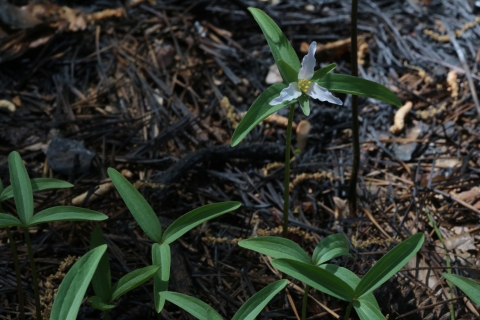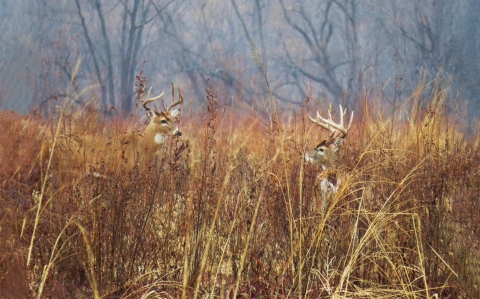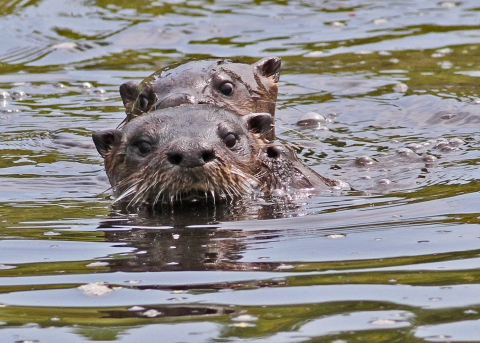Seasons of Wildlife
Winter
December through February is an exciting time at the refuge. Thousands of green-winged teal, blue-winged teal, mallards, American widgeon, black ducks, pintails, northern shovelers, ring-necked ducks, and Canada geese make the Pee Dee moist soil management units and green tree reservoir their winter home. Dabbling ducks harvest seed from the bottoms of moist soil management units and geese glean grain from crop fields. Overwintering songbirds eat seed from native shrubs, wildflowers, and grasses. Barred owls, great horned owls, and great blue herons are also among the cold weather sights. White-tailed deer browse on twigs and bark. Hunting is allowed by permit. The refuge is open for wildlife observation and photography.
Spring
Grasses and wildflowers green up and trees sprout leaves and begin to bloom during March, April, and May. Early flowers such as Virginia iris in ditches, red maple in forests, and black-eyed Susan along roadsides color the refuge landscape. Shorebirds replace waterfowl in drained moist soil management units. Neotropical songbirds return from the West Indies and Central and South America to breed and nest in forested wetlands. The refuge is open for fishing, wildlife observation, and photography.
Summer
June, July, and August is the time when songbird chicks are raised and fledged. Turtles are out and about and can often be sunning themselves on the banks of and logs in ditches and lakes. Barred owls, great horned owls, great blue herons, bald eagles, and ospreys abound. Wetland and streambank plants such as pickerelweed and arrowhead bloom and adorn the area. Winged sumac and devil’s walking stick display their flowers along roadsides attracting a wide variety of pollinating insects. The refuge is open for fishing, wildlife observation, and photography.
Fall
September, October, and November treat us to a variety of goldenrods and asters that feed pollinating insects before frost occurs. Red maple leaves turn red and sweetgum leaves turn purple giving the evergreen background on the refuge some variety. Fruit and seed of native plants hang on vegetation throughout the refuge. Ducks and geese begin making their way south to the Pee Dee moist soil management units and green tree reservoirs for a rest stop or overwinter destination. Hunting is allowed by permit. The refuge is open for wildlife observation and photography.
Featured Species
The different wetland habitats on the refuge support different suites of wildlife species. Some species, such as white-tailed deer, bobcat, opossum, and raccoon, range over the entire refuge. Most waterfowl species only reside in the refuge’s most soil vegetation units and the green tree reservoir during migration. Wood ducks are permanent residents of the refuge’s flooded forests. Neotropical migratory songbirds breed in the refuge forests in the spring and migrate to the West Indies and Central and South America for the winter. Raptors such as hawks and owls hunt the roadsides, crop fields, and filter strips searching for their prey. Barred owls and great horned owls reside on the refuge year-round. Great blue herons and green herons nest in the tops of trees that have been killed by lightning and are located near open water so they can catch fish close to their nests.





